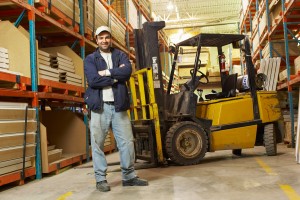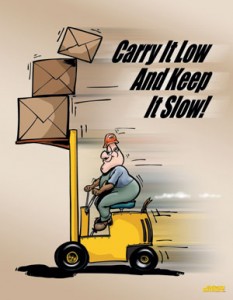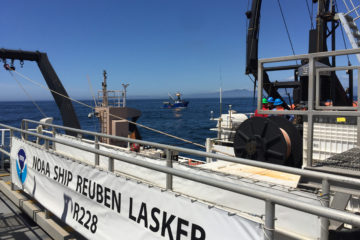Ocean Companies Safety Tip of the Week
SPOTLIGHT ON FORKLIFT SAFETY
 In Washington State you must have training to be able to drive a forklift or any other “Powered Industrial Truck”, also known as a PIT. You need both classroom training as well as driving, and the training needs to involve the specific equipment you may be driving. You need to treat your forklift license just as you do your state driver’s license. If you’re driving the PIT, you have the license on you. If you haven’t been trained on a piece of equipment and been given a certificate, stay off of it. It’s the law.
In Washington State you must have training to be able to drive a forklift or any other “Powered Industrial Truck”, also known as a PIT. You need both classroom training as well as driving, and the training needs to involve the specific equipment you may be driving. You need to treat your forklift license just as you do your state driver’s license. If you’re driving the PIT, you have the license on you. If you haven’t been trained on a piece of equipment and been given a certificate, stay off of it. It’s the law.
The first thing you need to do, EVERY DAY, is to perform a visual inspection of the PIT you will be using. The Forklift Safety Guide, put out by Washington State, has a sample checklist to use while performing your inspections. Check to see if everything is in working order so you, the driver, and anyone you are working around is not in danger. Make sure the fluids and fuel are at acceptable levels.
Wear your seatbelt whenever you are on the PIT, even if you are not moving. There are no exceptions.
 If there is more than one forklift operator working in your area, make sure you keep an eye on them and know their work patterns. Keep your work pattern as close to the same as you can. Keep the speed down, there are always people walking around, so watch for pedestrians all the time. Don’t let anyone surprise you or someone could get hurt. Use your horn when going around blind corners and when approaching an intersection. Avoid sharp turns and raise and lower your forks only when you are stopped. Keep your arms and legs in the vehicle at all times.
If there is more than one forklift operator working in your area, make sure you keep an eye on them and know their work patterns. Keep your work pattern as close to the same as you can. Keep the speed down, there are always people walking around, so watch for pedestrians all the time. Don’t let anyone surprise you or someone could get hurt. Use your horn when going around blind corners and when approaching an intersection. Avoid sharp turns and raise and lower your forks only when you are stopped. Keep your arms and legs in the vehicle at all times.
Never pick up a load heavier than what your PIT is rated for. Never, ever, add extra weight to a forklift’s counter balance so it can pick up a heavier load.
Pedestrians need to know a forklift driver’s view is very limited, never assume the driver can see you. Make sure you have eye contact with the driver before walking in their area. To be doubly sure, give them a shout out. I value my safety, so when I have to go around a forklift, I raise my voice and say something like “Going behind you”, and when I’m past them, I let them know, “I’m clear”. It’s a courtesy that can save your life.
Whether you have a load or not, keep your forks 4” to 6” off the ground when you’re driving or about ankle high and slightly tipped back for safety. Before you pick up a load, make sure it is stable and secure. The lower you carry a load, the more stable it is. If you can’t see over your load, drive in reverse, looking over your shoulder. If there is an incline, always keep your load uphill. When you leave the PIT, lower your forks to the ground, place it in neutral, set the brakes and shut it off. Even if you’re only going to be off for a short time, unless you’re standing beside it the whole time.
A forklift weighs almost twice what it can pick up, where we work; most of our pallets weigh over 3,000 pounds. That means, in order to lift that amount, our forklift weighs around 3 tons. To give you a visual, that’s about the weight of 2 Toyota Camrys. That’s a lot of weight
– Cherie


